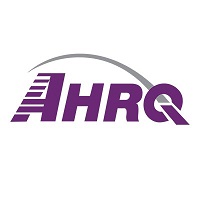 Integrating Patient-Generated Health Data into Electronic Health Records
Integrating Patient-Generated Health Data into Electronic Health Records
By Chun-Ju (Janey) Hsiao, Ph.D., Health Scientist Administrator, AHRQ’s Division of Digital Healthcare Research in the Center for Evidence and Practice Improvement and Chris Dymek, Ed.D., Director, AHRQ’s Digital Healthcare Research Program
Twitter: @AHRQNews
The 63-year-old patient has hypertension. With encouragement from his family, he checks his blood pressure daily using a digital blood pressure monitor. And thanks to advances in digital technology, he saves each reading on a mobile application whether he’s at home, at work, or on vacation.
What is the reward for his persistence? With his health data easily integrated into his electronic health record, his primary care doctor has a fuller picture of his health—one that is not limited to the traditional snapshot taken in an exam room. Using that data, he and his physician can have more informed conversations about treatment options and next steps.
While this scenario accurately recognizes that today’s patients can easily collect their own health data outside of the clinical setting, many ambulatory care practices lack the technical infrastructure, functional workflows, workforce capacity, and training to support the intake and use of patient-generated health data (PGHD).
With those challenges in mind, AHRQ has released a new guide on increasing the use of PGHD, one that provides practical tools for ambulatory care practices to implement PGHD programs and improve patient outcomes. It includes tips, ideas, and learning activities to let users tailor solutions to their needs. To our knowledge, this is the first practical guide that includes detailed considerations and steps for implementing a PGHD program.
As defined by the Office of the National Coordinator for Health Information Technology, PGHD is “health-related data created, recorded, or gathered by or for patients (or family members or other caregivers) to help address a health concern.” It may include patient-reported outcomes, health-relevant behaviors, and biometric measures. It may be collected via patient portals, mobile applications, and other devices or tools.
The potential for PGHD to impact healthcare delivery is significant. Traditionally, ambulatory care clinicians have based their treatment recommendations on information received from patients during clinical encounters. But PGHD offers insights into the day-to-day health of an individual. More comprehensive information gives patients and clinicians the ability to employ better strategies to prevent and manage acute and chronic conditions. In addition, clinicians and scientists can use these data to generate and apply analytical techniques to improve risk prediction and diagnoses.
AHRQ’s new guide addresses key topics on implementation and use of PGHD:
- Integrating PGHD to promote access to care and address disparities in health and health outcomes.
- Considering and addressing differences in health literacy among patients.
- Ensuring data are used and protected in appropriate ways.
- Developing systems that are compliant with any Federal, State, or local requirements.
- Evaluating the costs of implementing a PGHD program.
To highlight the availability of this new guide with primary care practices and others, AHRQ will sponsor a Feb. 22 National Web Conference on “Transforming Healthcare through PGHD Integration.” Registration is now open for the web conference, which will feature opportunities and recommendations for PGHD integration in ambulatory care. Specifically, the web conference panel will feature a recent AHRQ-funded environmental scan (PDF, 1.6 MB) and the PGHD Guide (PDF, 6.1 MB). In addition, representatives from the University of California San Francisco and Medical University of South Carolina will discuss different technical approaches to collect and integrate PGHD with electronic health records.
Collecting and integrating PGHD will not only improve communication between patients and clinicians. It will also increase patients’ faith in their ability to manage their health and, ultimately, improve their quality of life. With those benefits in mind, AHRQ will continue to support a research agenda to assess potential solutions and develop best practices for the collection and use of PGHD.
This article was originally published on AHRQ Views Blog and is republished here with permission.
